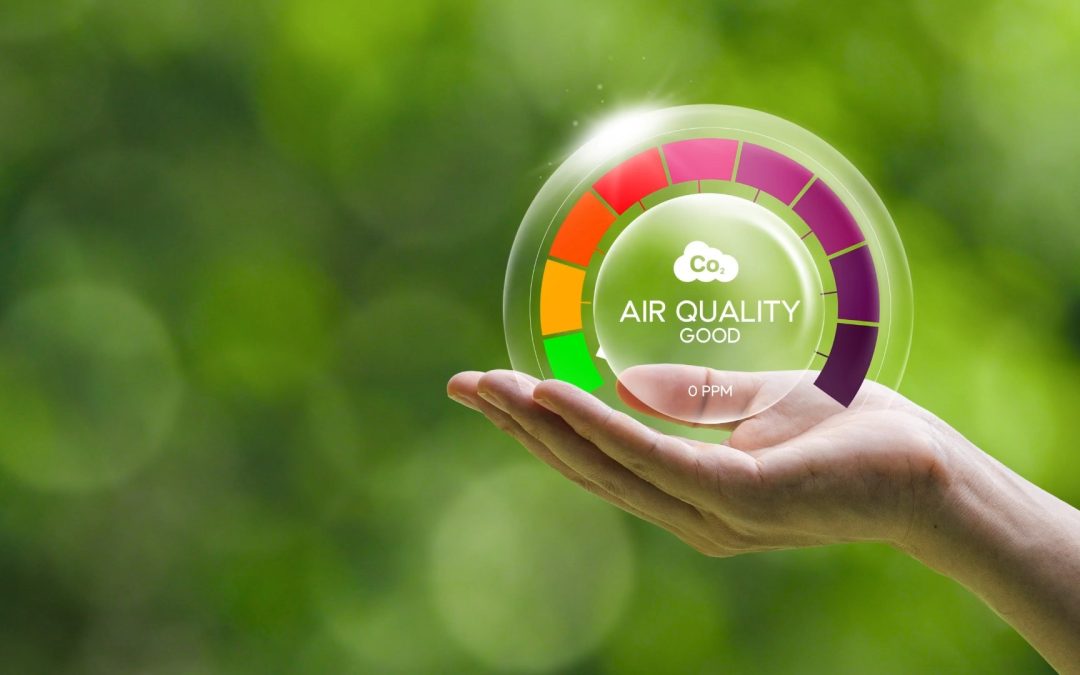Spring is in the air, and so are pollen, dust, and other allergens that can make life miserable for students and employees. If your school or office isn’t prepared, poor indoor air quality (IAQ) could be making allergy symptoms worse.
Improving IAQ isn’t just about comfort. Allergens in the air can trigger sneezing, congestion, headaches, and even more serious respiratory issues, affecting productivity and well-being. Fortunately, there are practical steps facility managers can take to reduce allergens and improve air quality.
Filtration Matters: The Role of MERV-Rated Filters
One of the most effective ways to capture airborne allergens is by upgrading HVAC filters. Ryan Baker, Senior Project Development Engineer, emphasizes the importance of using the right filter rating.
“MERV-rated filters matter,” Baker says. “Upgrading to MERV-13 or higher can capture smaller airborne particles like pollen, dust, and mold spores that trigger spring allergies.”
Filters with a lower minimum efficiency reporting value (MERV) rating may allow these particles to circulate freely, increasing allergy symptoms among building occupants. A high-quality filtration system ensures cleaner air and reduces exposure to common allergens.
Don’t Forget Routine Filter Replacement
Even the best filters won’t work well if they’re not maintained. Over time, filters get clogged with dust and debris, reducing HVAC efficiency and allowing allergens to bypass the system.
“Routine filter replacement is critical,” Baker explains. “Dirty or clogged filters not only reduce HVAC efficiency but also allow allergens to circulate more freely.”
According to the Environmental Protection Agency (EPA), indoor air can be two to five times more polluted than outdoor air if ventilation and filtration aren’t properly managed (EPA). Regular filter changes help keep pollutants under control, making a noticeable difference in allergy season.
Proper System Design Ensures Effective Filtration
For a filtration system to work well, it needs proper airflow. If an HVAC system isn’t designed or retrofitted correctly, even the best filters won’t perform as intended.
“Right-sized systems equal better filtration,” says Baker. “Systems designed or retrofitted correctly through a Guaranteed Energy Savings Contract (GESC) ensure proper airflow, which is essential for filters to work effectively.”
Schools and offices that have upgraded their HVAC systems through energy savings projects often see improvements in both air quality and energy efficiency. A well-balanced system ensures air moves through filters properly, capturing allergens instead of letting them recirculate.
Ventilation is the Missing Piece in IAQ Improvement
Filtration alone isn’t enough. Ventilation plays a key role in keeping indoor air clean. Bringing in outdoor air and managing humidity levels help reduce airborne contaminants that trigger allergies.
“Pair filtration with ventilation,” Baker advises. “Improved outdoor air intake and controlled humidity support filtration in reducing airborne contaminants.”
Studies show that better indoor air quality can improve productivity by up to 11% in work and school environments (Harvard T.H. Chan School of Public Health). This means that investing in IAQ improvements doesn’t just help with allergies. It also creates a healthier, more productive learning and working environment.
Steps to Prepare for Allergy Season
To keep allergy symptoms at bay, schools and offices should take a proactive approach:
- Upgrade filters to MERV-13 or higher to capture smaller allergens.
- Replace filters regularly to maintain HVAC efficiency and air quality.
- Ensure HVAC systems are properly designed or retrofitted for optimal filtration.
- Increase ventilation to bring in fresh outdoor air and control humidity.
Spring allergies don’t have to take over your school or workplace. By improving IAQ through filtration, ventilation, and regular maintenance, facility managers can create a healthier, more comfortable space for everyone.

